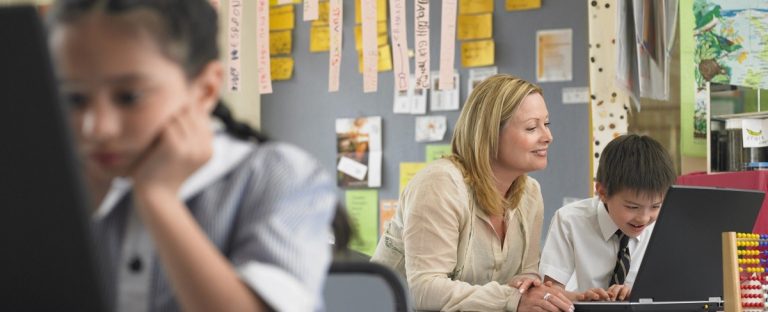
The Coalition government announced their new school funding proposal with a flourish and a Gonski.
David Gonski was the architect of the 2011 needs-based funding model that the Labor Party hobbled, and which the Liberal Party then sent right down the gurgler.
So, for many in the education sector, Gonski’s reappearance was both surprising and comforting. Did this mean we were back to a funding model that was apolitical, sector blind and all about a distribution of money based on need?
Well, there is good news and bad news – and then some more bad news.
More money
Good news
It is substantially more money than what the Coalition government currently allocated for education – 75 percent more by the prime minister’s own reckoning, from AUD17.5 billion this year to AUD30.6 billion by 2027.
Bad news
It’s less money than what some states and systems were promised under the deals done with the Labor government – about AUD22 billion less. They say they need that promised money to deliver on education programmes they have put in place, and which they argue are already making a real difference to students.
Fairer and sector blind
Good news
This funding deal returns to the original Gonski principle of one funding formula for everyone. Each student will attract the same base amount – called the Schooling Resource Standard – of AUD9,271 per primary school student and AUD12,193 per high school student.
This is in contrast to the multiple deals done with systems and states back in 2013 as the Labor government tried to get a Gonski take-up around the nation. They gave out lots of money, and promised everyone would be a winner. This deal-making did not solve the problem of funding inequity between the schooling sectors. Poor schools got more money, but so did rich schools.
Bad news
The federal government inexplicably remains the benevolent benefactor of the private sector. It will fund 80 percent of the Schooling Resource Standard for private schools students, and only 20 percent for government school students. It will rely on the goodwill of the states to fund the remaining amounts. So, it is only the private schools that are getting an iron-clad guarantee for most of their funding into the future.
Not fair and certainly not sector blind.
Needs-based
Good news
The government claims their new funding proposal returns us to the absolute crux of the original Gonski review – it will be truly needs-based.
This means there will be extra loadings for students who need more support to achieve. There will be loadings for low socio-economic status, Indigenous students, students with a disability, students with limited English language proficiency, school size, and regional or remote locations.
Bad news – and this is really bad news
The government has no proposal for the allocation of those loadings. They don’t even know how many students are eligible for those loadings.
As a consequence, they have no idea how much money it will cost to fund them. This is why the pundits keep saying “more analysis is needed” before anyone knows how much their school is really going to get, or lose.
Who will be eligible for the disability loadings?
Each state and sector defines disability differently. The government says it will come up with a national definition. But it does not have one yet.
Who will be eligible for the English language loadings?
How “limited” does your English language need to be? How would this be measured? Nobody knows, including the government.
And there is nothing in the budget papers or the Education Acts to indicate the money will actually be delivered to the students who attract the loadings.
Recent history suggests the money won’t necessarily go to them. States, instead, could just spend the money on the general business of running an education system.
The original Gonski report said it was imperative an independent body, a National Schools Resourcing Body, be set up to answer these questions, and to monitor how those loadings are distributed.
However there is no indication that body will ever be instituted, and without it, this funding proposal cannot claim to be needs-based and it will not successfully address educational disadvantage.
Very bad news indeed.
New review – Gonski 2.0
Good news
David Gonski will now conduct a new review – the Gonski 2.0 review.
This new review is to decide what good teaching and learning look like. That’s a little odd as the government already has a body that does that – the Australian Institute of Teaching and School Leadership.
But fingers crossed he’ll be able to sneak that National Schools Resourcing body back into his recommendations.
Bad news
The expert panel has only until December to come up with an answer that will inevitably start with “It depends…”
They haven’t even decided on the terms of reference yet.
Suggestion for the panel
If I could give one suggestion to Gonski’s review panel as they tackle this complicated question, it would be this: ask teachers what is needed to close that achievement gap.
Ken Boston, a member of the Gonski review panel, observed,
We concluded the issue in low-performing schools is not the quality of teachers in these schools but the magnitude of the task they are facing. These teachers work in the emergency wards of Australian education, yet they lack the battery of specialist support typical of an emergency ward in a hospital.
The fact we never ask teachers at the coal face for their expert input on what works, and what doesn’t, is perhaps the strangest twist of all in this good news, bad news story.
By Misty Adoniou, Associate Professor in Language, Literacy and TESL, University of Canberra
This article was originally published on The Conversation. Read the original article.
Liked this? Then you’ll love these…
Australia: Thumbs down to university fund cuts, higher student fees – poll
Australia: Student journos cry foul after being barred from Budget lock-up







